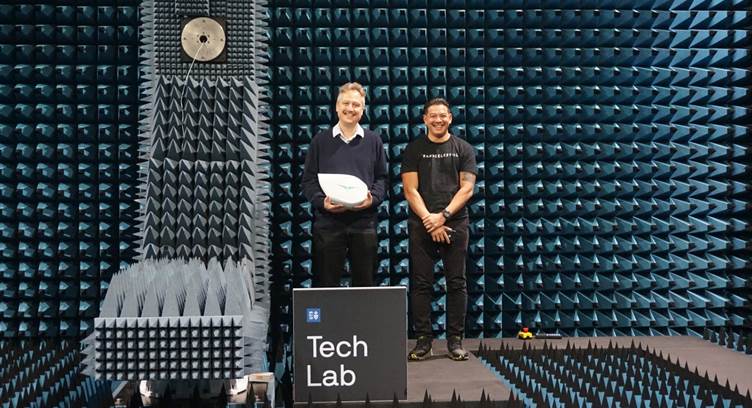Transcelestia has proven that it is possible to deliver 5G connectivity wirelessly using laser technology at a 10Gbps capacity.
The technology showcase took place at a new demonstration site at the University of Technology Sydney (UTS Tech Lab).
Transcelestial launched the new public 5G demonstration facility in collaboration with UTS Tech Lab, alongwith partners - Mavenir, a leading global Open-RAN vendor, and ALLDAS Solutions, an Australian wireless technical consultancy group, specialising in next generation in-building coverage solutions and use cases.
The demonstration took place at UTS Tech Lab, which has one of Australia’s largest near-field antenna anechoic chamber, and conducts cross-layer research into 5G/6G technologies and systems. These facilities allowed the demonstration to model and analyse next generation technologies via reliable, high capacity, low latent and highly secure communications. The demonstration captured a 5G signal on site A, and via two of Transcelestial’s CENTAURI devices mounted on rooftops sent it to site B using CPRI protocol which housed a Mavenir multi carrier, multi band Remote Radio Unit, delivering 5G signals to multiple devices.
The global Internet distribution challenge impacts billions around the world today who still do not have accessto quality Internet connectivity, with many being just within 10km of the nearest fiber optic cable. The main deterrent to ubiquitous internet delivery in cities is the cost and delays associated with rolling out fibre cables and spectrum or bandwidth challenges associated with RF (radio frequency) technology. 5Grequires nearly 10 times densification of cell tower infrastructure. Traditionally each additional tower needs tobe connected to a fiber optic cable which can be expensive and slow to deliver given right of way challenges. Transcelestial’s lasercomms solution provides a highly reliable, secure and easily scalable replacement to fibreoptic cables, and a more robust connectivity option for both indoor and outdoor DAS Hotel and Small Cell applications.
Internet connectivity demands have put extreme pressure on what’s expected of telecom and internet service providers. Delivering 5G connectivity from source to users demands a highly robust interface (e-CPRI minimum10Gbps capacity) between the fronthaul infrastructure for cellular networks (otherwise known as the connectivity between a Remote Radio Unit and a Baseband Unit), forcing most carriers to rely on physical fiber cables as the only viable solution.
Mohammad Danesh, Co-Founder and CTO of Transcelestial
Solutions to the global Internet distribution challenge have been limited by infrastructure and hardware -today we’ve broken that ceiling. Until now, most telecom and internet service providers could only rely onphysical fibre connectivity as a solution to deliver 5G, everywhere. Transcelestial’s lasercomms technologygives us a viable alternative to connect our digital future and meet civilisation’s long-term communicationneeds.
Dr Ray Kirby, Professorand UTS Tech Lab Centre Director
UTS Tech Lab is proud to partner with Transcelestial to launch this public demonstration site and to supportthe team as they make a significant breakthrough in global connectivity innovation. We are committed tofostering university and industry collaboration to deliver real-world solutions.




















